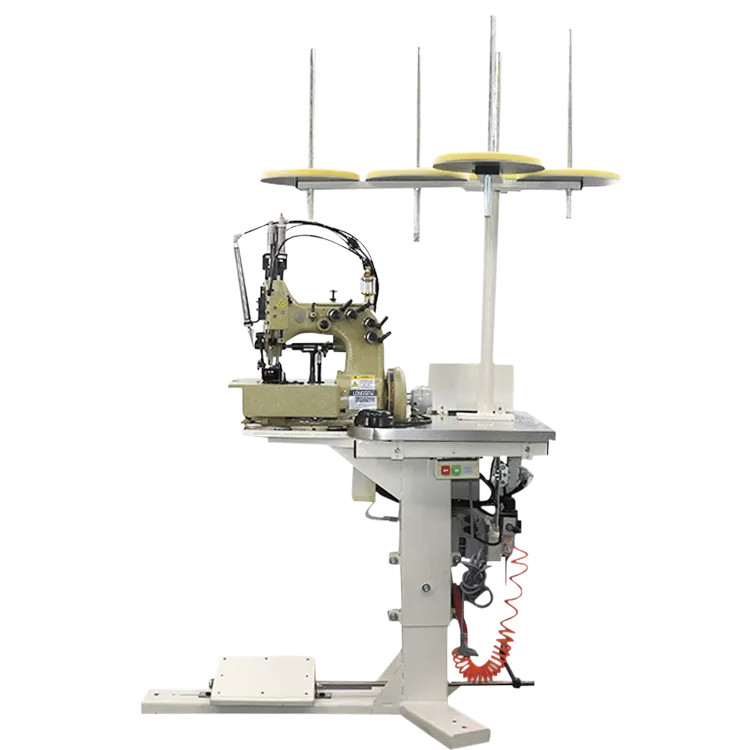Exploring the Innovations and Features of Modern Needle Sewing Machines
The Evolution and Importance of Needle Sewing Machines
The needle sewing machine, an essential tool in both industrial and domestic sewing, has undergone significant transformations since its inception. From its early beginnings in the 19th century to the sophisticated machines we see today, the needle sewing machine has played a crucial role in revolutionizing the textile industry, enhancing productivity, and enabling creativity in garment making.
The first practical sewing machine was patented by Elias Howe in 1846. This invention marked the beginning of a new era in sewing, as it introduced a mechanical solution to a task that had previously been done by hand. Howe's design employed a needle with a pointed end and a groove that allowed the thread to pass through, laying the foundation for future designs. Soon after, Isaac Singer improved upon this concept, adding a foot pedal that allowed for easier operation. These innovations paved the way for the establishment of sewing machines in homes and factories, drastically changing how clothing and other textiles were produced.
By the late 19th and early 20th centuries, needle sewing machines had become essential in factories, enabling mass production of clothing. The ability to produce garments quickly and efficiently met the burgeoning demand of the growing population during this period. Additionally, the machine reduced the time and skill required for assembling garments, making fashion accessible to a wider audience than ever before.
needle sewing machine

As technology progressed, so did the capabilities of needle sewing machines. Electronic and computerized sewing machines emerged in the latter half of the 20th century, integrating digital controls and a wide range of stitching options. These advancements allowed for more intricate designs, making it possible to create detailed patterns and textures that were previously unattainable with manual machines. Today’s needle sewing machines come equipped with features such as automatic threading, built-in embroidery options, and even connectivity to computer software for custom design creation.
The needle sewing machine has not only fostered innovation in clothing production but has also become a tool for individual creativity. Many hobbyists and professionals alike have turned to sewing as a means of self-expression. With the accessibility of sewing machines, individuals can create personalized garments, home decor, and unique crafts. This creative outlet has contributed to a resurgence in the DIY culture, emphasizing sustainability and individuality in an era dominated by fast fashion.
Moreover, the importance of needle sewing machines extends beyond personal projects and the fashion industry. They play a vital role in training programs and technical education, preparing the next generation of designers and seamsters. Skills such as garment construction, pattern making, and fabric manipulation are crucial in the fashion landscape, and needle sewing machines serve as the primary tool for this education.
In conclusion, the needle sewing machine is more than just a tool for stitching fabric; it represents innovation, creativity, and accessibility in the world of textiles. From its historical significance in the Industrial Revolution to its modern-day applications in both commercial and personal settings, the needle sewing machine remains a cornerstone of the sewing industry. Its evolution continues to shape how we think about clothing production, craftsmanship, and the artistry involved in making textiles. As we look to the future, the needle sewing machine will undoubtedly continue to play a vital role in transforming fabric into functional and beautiful creations.
-
Boost Production Efficiency with a Pattern Sewing MachineNewsAug.29,2025
-
Industrial Excellence with the Best Heavy Duty Sewing MachineNewsAug.29,2025
-
Precision and Power with the Best Pattern Sewing MachineNewsAug.29,2025
-
Reliable Bulk Packaging Starts With the Right FIBC Sewing MachineNewsAug.29,2025
-
Advanced Packaging Solutions: Elevate Productivity with Jumbo Bag Sewing Machine and Industrial Stitching EquipmentNewsAug.29,2025
-
High-Performance Solutions for Bulk Packaging: FIBC Sewing Machine and MoreNewsAug.29,2025
-
Maximize Efficiency with an Industrial Cylinder Arm Sewing MachineNewsAug.28,2025


























